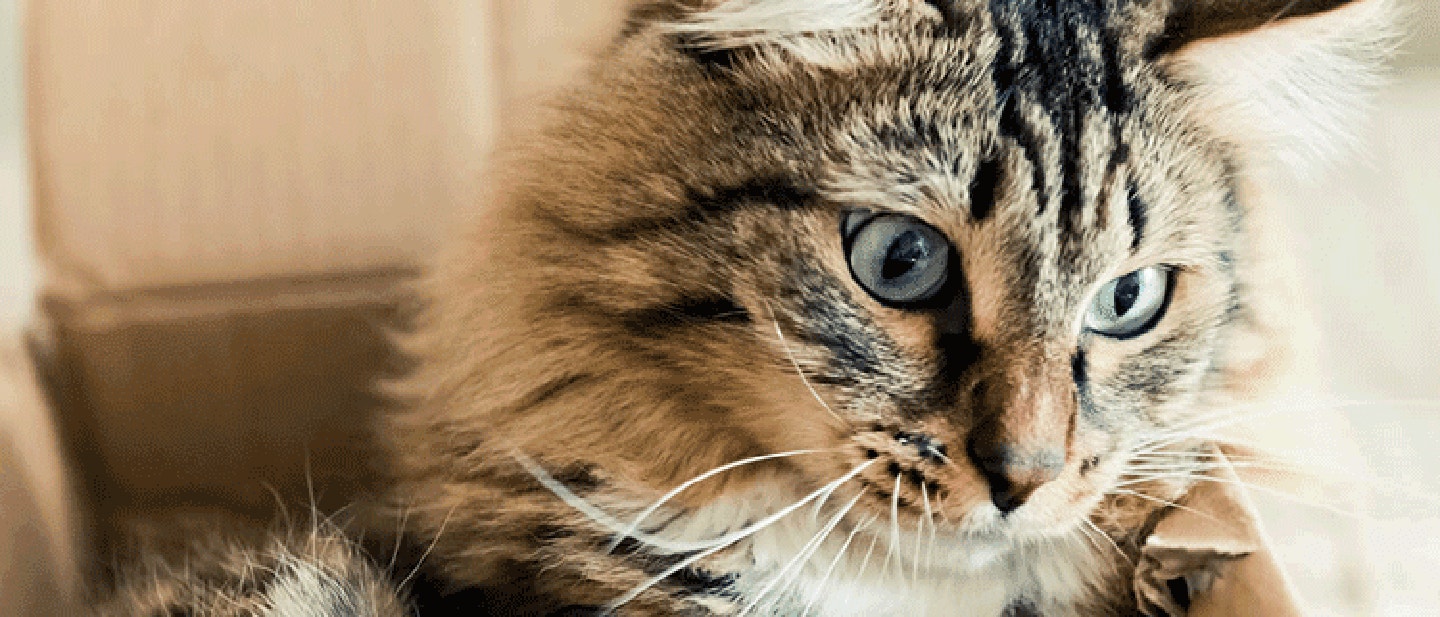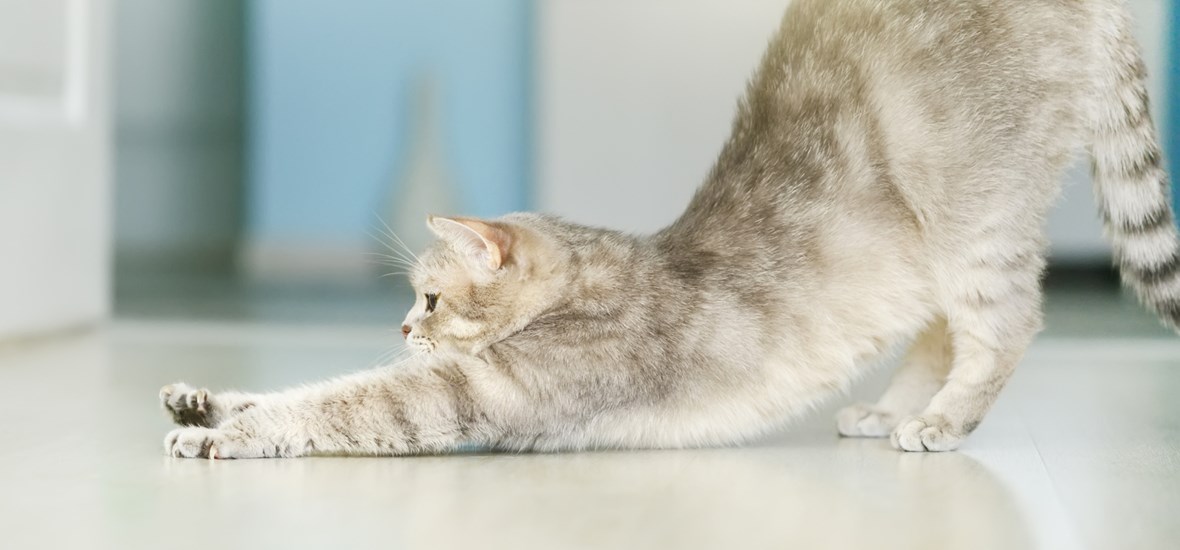
HOW TO STIMULATE YOUR INDOOR CAT
ENRICHING YOUR CAT'S KINGDOM AND KEEP HER HAPPY
In today's world, your cat's lifestyle has significantly evolved in that she often lives indoors, and no longer needs to hunt to feed herself. Both of these changes encourage a more sedentary lifestyle that are far from the levels of physical activity your dynamic friend would naturally carry out.
Although your cat does not require expansive living spaces, she does, however, need an enriched environment where she is able to find plenty of stimulation to play, hide, explore, climb, scratch, mark, observe and, of course, sleep. You can quite easily achieve such a stimulus-rich environment by exploiting your vertical indoor space with the use of cat trees, cat ropes and other elevated furniture, such as window shelves or tall closets. And beyond the physical stimulation of climbing, your cat will love being able to watch people, objects and small animals from a vantage point, thereby enhancing both her psychological and physiological wellbeing!
STAYING ON THE BALL TO GET YOUR CAT ACTIVE
Enabling your cat to act out her natural instincts, such as her predatory behaviours, is very important for her wellbeing. With this in mind, the ideal setup would be to provide your cat with open access to a safe outdoors space where she is free to hunt and play to her heart’s content. If your immediate outdoor surroundings are safe, then we would recommend that you allow your cat unrestricted access. However, if that is not the case, then you may wish to consider building some form of enclosure so as to enable your cat to benefit from outdoor stimulation in a safe environment.
A word from Anne-Claire Gagnon, Feline behaviourist: - “Physical exercise brought on by exploring and playing has multiple benefits that go beyond energy expenditure and burning calories, and contribute to overall wellbeing: it increases mental stimulation, improves muscle mass, and therefore enhances your cat's metabolism, it enhances mobility and blood flow, and, when playing in your company, it naturally reinforces her bond with you.”

“FELINE FUN FOR ALL”
When preparing to play with your indoor cat and stimulate her, keep in mind that she will generally be more receptive to certain types of games and interactions, with the most popular ones being those involving fast and unpredictable movement, squeaky toys, prey simulation, and rewards in the form of treats! An equally stimulating alternative for when you may not be around, is a cat tree that allows your cat to exercise, scratch, climb, hide, and stay on the look out! Altering her environmental setup every now and then to mix things up a bit will help to maintain her innate curiosity.
Anecdotally, another very alternative type of stimulation comes in the form of a canine friend. Indeed, studies have revealed that if you own a dog, then your cat is likely to replace some of her time spent thinking about food with time spent interacting with her canine buddy, therefore decreasing her susceptibility to weight gain!
A word from Anne-Claire Gagnon, Feline Behaviourist: “Who would have thought that stimulating your cat may also be achieved through feeding her? This is true for two reasons. Firstly, promoting additional water intake through feeding your cat high moisture content foods, or 'wet foods', has been proven to increase your cat's level of activity. Secondly, engaging your cat in games where the reward for her participation is kibbles or other treats is a good method to overcome boredom through play!”
GETTING TO KNOW EACH OTHER
Though encouraging movement for your cat is positive, it is important not to overdo it, and to respect your companion's physiological rhythm. At the early stages of interaction, it’s best to limit your play sessions to 2-3 minutes. Play sessions and standard interaction should not be forced and should not disturb your cat's tranquillity. We would advise that you only engage your friend when you feel she is receptive! Every cat is unique, and so are her preferences and requirements. Your cat's optimal level of exercise may depend on a number of congenital factors such as breed, age, or even prior history of disease. To find out what this means for your cat, we recommend that you speak to your veterinarian.
